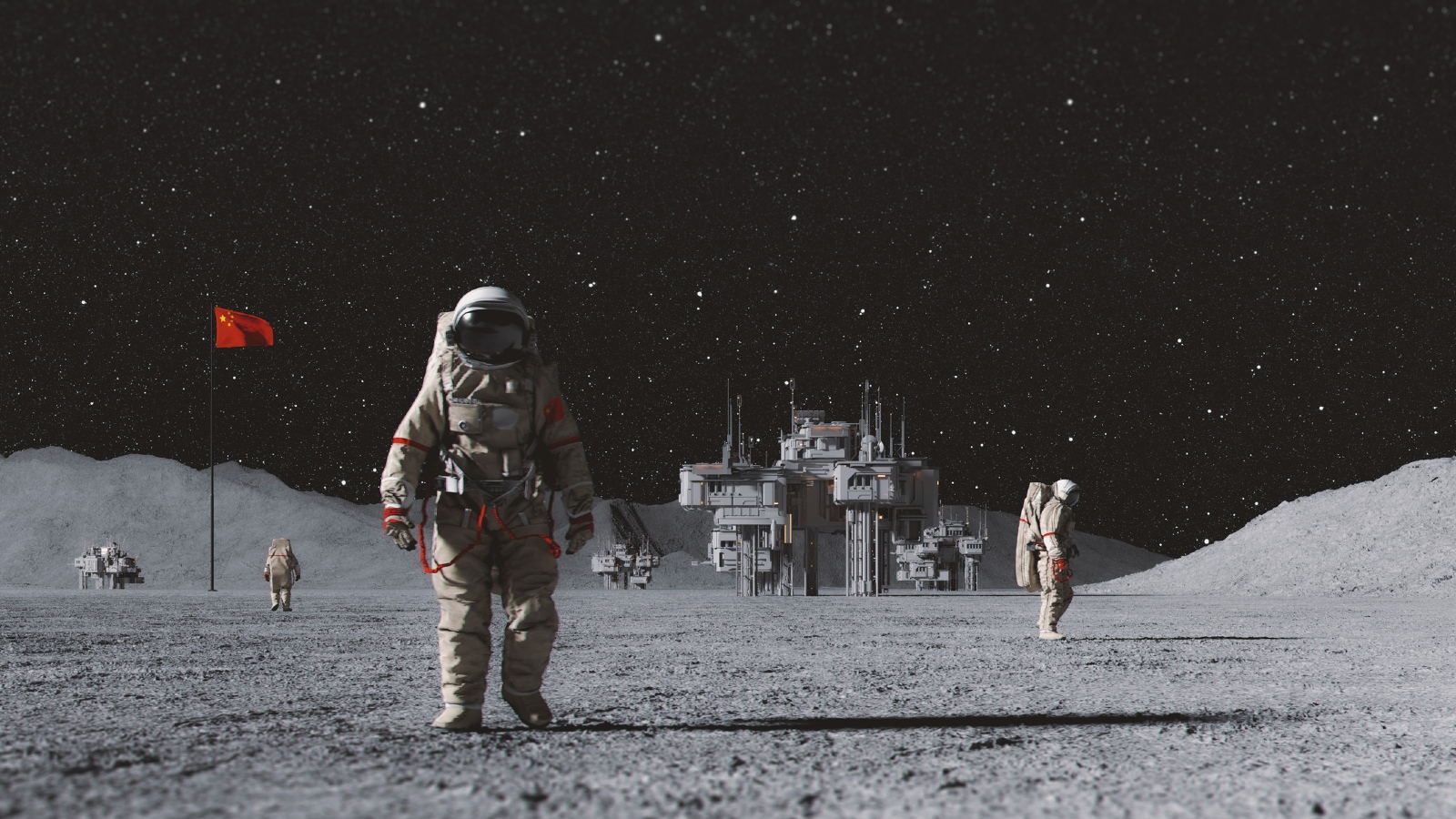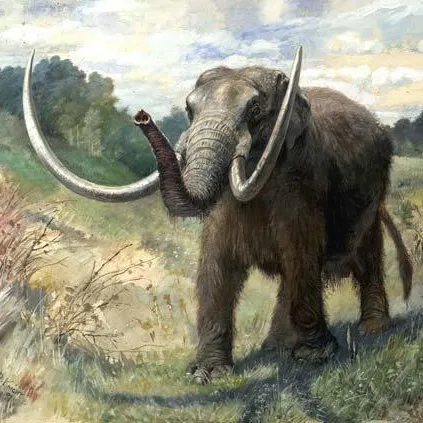New report warns that China could overtake the US as top nation in space — and it could happen ‘in 5-10 years,’ expert claims
By Harry Baker
Copyright livescience

Skip to main content
Close main menu
Live Science
Sign up to our newsletter
View Profile
Search Live Science
Planet Earth
Archaeology
Physics & Math
Human Behavior
Science news
Life’s Little Mysteries
Science quizzes
Newsletters
Story archive
Skyscraper-sized asteroid flyby
Mysterious hand positions on Maya alter
Anthropologist Ella Al-Shamahi on human origins
Treasure in scorched Roman-era house
Ant clones members of another species
Don’t miss these
Space Exploration
Human stem cells become more active in space — and that’s not a good thing
‘The sun is slowly waking up’: NASA warns that there may be more extreme space weather for decades to come
‘City killer’ asteroid 2024 YR4 could shower Earth with ‘bullet-like’ meteors if it hits the moon in 2032
Climate change
Humanity could be just 3 years away from crossing a dire climate threshold, report warns
NASA aiming to build nuclear reactor on the moon by 2030
How Trump’s budget cuts could affect 2 iconic space telescopes: Hubble and James Webb
Space Exploration
ChatGPT could pilot a spacecraft shockingly well, early tests find
Engineering
Secretive X37-B space plane to test quantum navigation system — scientists hope it will one day replace GPS
The universe may start dying in just 10 billion years, alarming new model predicts
China is dunking data centers into the ocean to keep them cool
10th time lucky! SpaceX’s Starship nails successful test flight after string of explosive setbacks
How the body changes in space — usually, for the worse
Extraterrestrial Life
Controversial paper questions whether interstellar visitor 3I/ATLAS is ‘possibly hostile’ alien tech in disguise
Space Exploration
SpaceX’s Starlink satellite constellation is interfering with radio telescope observations
Space Exploration
NASA spots Japan’s doomed ‘Resilience’ moon lander from orbit — and it’s surrounded by far-flung debris
Space Exploration
New report warns that China could overtake the US as top nation in space — and it could happen ‘in 5-10 years,’ expert claims
Harry Baker
18 September 2025
A new report from the Commercial Space Federation warns that China could soon overtake the U.S. in the “new space race.” The country’s rapid progression starkly contrasts the limitations imposed on NASA by record-breaking budget cuts.
When you purchase through links on our site, we may earn an affiliate commission. Here’s how it works.
The new report hints that China could win the race to return to the moon. The country is also planning to build a fully operational lunar base by 2035.
(Image credit: Getty Images)
A new report warns that China’s rapid and unrelenting growth within the space sector will see the country overtake the U.S. in the “new space race” to become the world’s leading space-faring nation in as little as “five or 10 years,” experts say.
The stark warning comes less than two weeks after a Senate Commerce Committee hearing discussed the increasing likelihood of China beating the U.S. in a race to return humans to the moon. During these talks, former NASA Administrator Jim Bridenstine told senators that “it is highly unlikely the United States will beat China’s projected timeline,” unless the recent record-breaking cuts to NASA’s budget are reversed.
The new report, titled “Redshift,” was published on Tuesday (Sept. 16) by the Commercial Space Federation — an advocacy group that supports investment in the U.S. commercial space industry. It details how China’s space infrastructure and capability of exploring the solar system has rapidly grown over the last decade, and its improvements show no signs of slowing down.
You may like
Human stem cells become more active in space — and that’s not a good thing
‘The sun is slowly waking up’: NASA warns that there may be more extreme space weather for decades to come
‘City killer’ asteroid 2024 YR4 could shower Earth with ‘bullet-like’ meteors if it hits the moon in 2032
The 112-page document contains the most up-to-date information on China’s various space assets and missions, including the country’s new space station, its growing satellite megaconstellations and its plans to visit and colonize the moon.
“China is not only racing to catch up — it is setting pace, deregulating, and, at times, redefining what leadership looks like on and above Earth,” researchers wrote in the report. “China’s space ascendancy — propelled by disciplined policy, strategic investment, and sweeping technological gains — has fundamentally redrawn the domain in which global power is contested.”
Related: China is building a constellation of AI supercomputers in space — and just launched the first pieces
China’s Tiangong space station was fully completed in 2023 and has housed Chinese astronauts ever since. (Image credit: China Manned Space Agency)
One of the most worrying issues raised by the new report for the U.S. is the possibility that China will be the first nation to return humans to the moon, for the first time since 1972. While NASA’s Artemis missions have been repeatedly delayed, partly due to recent issues with SpaceX’s temperamental Starship rocket, China has continued to hit “major milestones” on its plan to land astronauts by 2030. These include mapping the lunar surface in record detail, returning historic lunar samples to Earth and building their own supersized rockets. (NASA is currently aiming to land astronauts on the moon by 2027.)
Sign up for the Live Science daily newsletter now
Get the world’s most fascinating discoveries delivered straight to your inbox.
Contact me with news and offers from other Future brandsReceive email from us on behalf of our trusted partners or sponsorsBy submitting your information you agree to the Terms & Conditions and Privacy Policy and are aged 16 or over.
China is also planning to build a fully operational moon base, equipped with an autonomous nuclear reactor, by as early as 2035. This could help the nation stake its claim on valuable lunar mining materials and give them the edge in the race to eventually send humans to Mars, Live Science’s sister site Space.com recently reported.
Another area where China is likely to dominate is in low-Earth orbit, thanks to its recently completed Tiangong space station, which will become the only major state-run space station in operation once the International Space Station (ISS) is decommissioned at the end of this decade. (NASA has no plans to replace the ISS directly, although a number of commercial ventures are pursuing plans for their own stations.)
China now has six operational spaceports, allowing them to launch more rockets than ever before. (Image credit: VCG/VCG via Getty Images)
China is also starting to build out its own satellite megaconstellations to rival SpaceX’s rapidly expanding “Starlink” network. It’s also planning to build an orbital solar power array and its own version of the James Webb Space Telescope in the near future.
You may like
Human stem cells become more active in space — and that’s not a good thing
‘The sun is slowly waking up’: NASA warns that there may be more extreme space weather for decades to come
‘City killer’ asteroid 2024 YR4 could shower Earth with ‘bullet-like’ meteors if it hits the moon in 2032
On the ground, China now has six different operational spaceports, which will allow the country to rapidly increase the number of rockets it can launch in the coming years.
But perhaps the most alarming point for the U.S. is that the country is completing all these impressive tasks simultaneously. In other words, “China is living its Apollo, ISS, and commercial space eras all at once,” the report authors wrote.
Related: Chinese astronauts make rocket fuel and oxygen in space using 1st-of-its-kind ‘artificial photosynthesis’
The secret to China’s recent success is (unsurprisingly) increased funding, especially for commercial companies, which have been given special support from the government to aid the China National Space Administration (CNSA). For example, the country invested $2.86 billion in its commercial space ventures last year — more than 17 times the $164 million it spent in 2016, according to the report.
Another important factor has been China’s willingness to work with other nations to achieve its goals, including Russia, India and Japan. This approach, dubbed the “Space Silk Road” initiative, has seen China set up over 80 projects with international partners so far, “eroding U.S. influence,” the researchers wrote.
The Chang’e 6 mission returned lunar samples from the moon’s “far side” last year. This photo shows the Chinese spacecraft in orbit around the moon, shortly before touching down on the surface. (Image credit: Photo/China National Space Administration/Handout via Xinhua)
The report’s co-author Jonathan Roll, a space policy analyst at Arizona State University, was particularly surprised by how quickly China’s space capabilities have progressed since he first properly studied the topic in the early 2020s: “I thought I had a pretty good read on this when I was finishing grad school,” Roll told Ars Technica. “[But the fact] that almost everything needed to be updated, or had changed three years later, was pretty scary.”
RELATED STORIES
—China has launched a secret robot to the far side of the moon, new Chang’e 6 photos reveal
—Giant ‘white streak’ appears over multiple US states as Chinese rocket dumps experimental fuel in space
—First-ever image of China’s mysterious ‘quasi moon’ probe revealed weeks after it secretly launched into space
Meanwhile, America’s space ambitions have been hamstrung by the Trump administration, which has proposed cutting NASA’s budget almost in half, putting multiple long-term missions in jeopardy and creating knock-on impacts in the commercial space industry.
“The United States is still ahead today in a lot of areas in space,” Dave Cavossa, president of the Commercial Spaceflight Federation, told Ars Technica. “But the Chinese are advancing very quickly and poised to overtake us in the next five to 10 years if we don’t do something.”
Harry Baker
Social Links Navigation
Senior Staff Writer
Harry is a U.K.-based senior staff writer at Live Science. He studied marine biology at the University of Exeter before training to become a journalist. He covers a wide range of topics including space exploration, planetary science, space weather, climate change, animal behavior and paleontology. His recent work on the solar maximum won “best space submission” at the 2024 Aerospace Media Awards and was shortlisted in the “top scoop” category at the NCTJ Awards for Excellence in 2023. He also writes Live Science’s weekly Earth from space series.
You must confirm your public display name before commenting
Please logout and then login again, you will then be prompted to enter your display name.
Human stem cells become more active in space — and that’s not a good thing
‘The sun is slowly waking up’: NASA warns that there may be more extreme space weather for decades to come
‘City killer’ asteroid 2024 YR4 could shower Earth with ‘bullet-like’ meteors if it hits the moon in 2032
Humanity could be just 3 years away from crossing a dire climate threshold, report warns
NASA aiming to build nuclear reactor on the moon by 2030
How Trump’s budget cuts could affect 2 iconic space telescopes: Hubble and James Webb
Latest in Space Exploration
Human stem cells become more active in space — and that’s not a good thing
‘Why would you even want to go?’: Readers react to the hypothetical 400-year voyage to Alpha Centauri
Ghostly ‘spiral’ photobombs Perseid meteors over several US states — and experts are unsure what caused it
Would you board a spacecraft that takes 400 years to reach Alpha Centauri?
Jim Lovell, commander of NASA’s Apollo 13 moon mission, dies at 97
Proposed spacecraft could carry up to 2,400 people on a one-way trip to the nearest star system, Alpha Centauri
Latest in News
New report warns that China could overtake the US as top nation in space — and it could happen ‘in 5-10 years,’ expert claims
Jaguar in Brazil smashes record for the species’ longest documented swim
See the moon, Venus and Regulus in a rare triple conjunction tomorrow
RFK’s handpicked advisers are coming for the childhood vaccine schedule. Here’s what to know.
Tiny ‘brains’ grown in the lab could become conscious and feel pain — and we’re not ready
‘There’s no shoving that genie back in the bottle’: Readers believe it’s too late to stop the progression of AI
LATEST ARTICLES
Tiny ‘brains’ grown in the lab could become conscious and feel pain — and we’re not ready
See the moon, Venus and Regulus in a rare triple conjunction tomorrow
Jaguar in Brazil smashes record for the species’ longest documented swim
There’s a 90% chance we’ll see a black hole explode within a decade, physicists say
RFK’s handpicked advisers are coming for the childhood vaccine schedule. Here’s what to know.
Live Science is part of Future US Inc, an international media group and leading digital publisher. Visit our corporate site.
Contact Future’s experts
Terms and conditions
Privacy policy
Cookies policy
Accessibility Statement
Advertise with us
Web notifications
Editorial standards
How to pitch a story to us
Future US, Inc. Full 7th Floor, 130 West 42nd Street,
Please login or signup to comment
Please wait…



